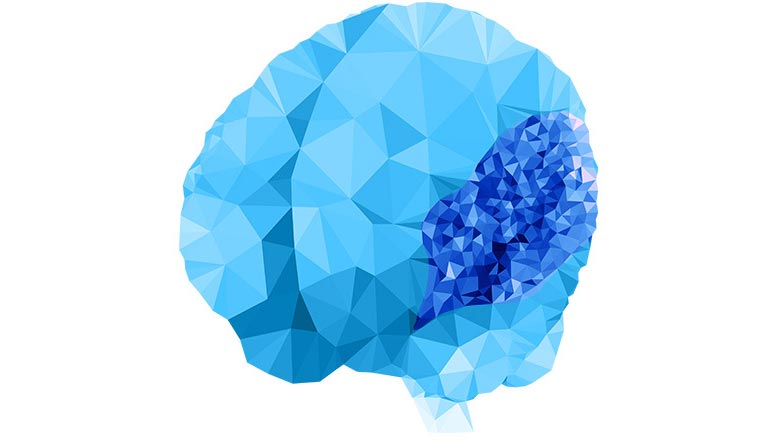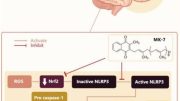
In polymicrogyria, the cortex of the brain has many irregular, small folds (gyria) and disorganization of its layers, caused by mutations in one of several genes. Many affected children have severe developmental delay, intellectual disabilities, and epilepsy, Credit: Richard Smith/Sebastian Stankiewicz, Boston Children’s Hospital
A mutation in four children with polymicrogyria illuminates the role of bioelectricity in early brain development.
In polymicrogyria, the cortex of the brain has many irregular, small folds (gyria) and disorganization of its layers. Many affected children have severe developmental delay, intellectual disabilities, and epilepsy, and many need to use a wheelchair. Mutations in several different genes can cause this “overfolding of the brain” condition.
Studying four patients with polymicrogyria, Richard Smith, PhD, identified mutations in a gene that caused him to do a double-take. His curiosity drove him to investigate the role of this gene, called ATP1A3, in the developing brain.
“ATP1A3 is critical to many cell biological processes,” says Smith, an investigator the Division of Genetics and Genomics at Boston Children’s Hospital. “It’s one of the most important genes we have in our brains.”
Bio-electricity and brain development
ATP1A3 encodes a protein that makes up part of a cellular pump. It moves sodium and potassium ions across the cell membrane, allowing our cells to maintain differing concentrations of charged ions on either side, similar to a battery. This difference enables electrical currents to flow into or out of cells, driving action potentials in neurons and other essential cell functions.
“For me it was very compelling to understand how these pump proteins, and the flow of ions, contribute to core mechanisms in brain development,” says Smith, an electrophysiologist by training. “We got a lot of great biological insights by studying these four patients.”
A spatial and temporal ‘atlas’ of ATP1A3
When and where in the typical developing brain is ATP1A3 turned on? To answer this question, Smith, with senior investigator Christopher Walsh, MD, PhD and colleagues at multiple other sites, obtained donated human tissues from several hospital tissue banks and the NIH NeuroBiobank. The investigators analyzed samples from two times in early brain development: at around 20 weeks’ gestation, when the fetal cortex, initially smooth, starts to fold, and in infants soon after birth.
Using single-cell RNA sequencing (DropSeq) in collaboration with Marta Florio, PhD, at Harvard Medical School, they looked for expression (turning on) of ATP1A3 in about 125,000 individual neurons from 11 areas of the prenatal cortex. They also profiled about 52,000 neurons from the infants, sampling four areas of the cortex.
Overall, ATP1A3 expression levels were highest in the prefrontal cortex at both time points, and highest in the most active, frequently-firing neurons in the cortex. In the fetal cortex, ATP1A3 expression was particularly high in the subplate, a layer that disappears later in development. Electrical activity in the subplate is thought to be a hub of signaling driving synapse formation, neuron migration, and other brain developmental processes.
“In the infants, we found increased expression of the gene in interneurons, which are inhibitory,” says Smith. “We think that ATP1A3 mutations may disrupt the balance of excitation and inhibition in the brain, which could contribute to epilepsy in other ATP1A3-related conditions.”
Lessons for other ATP1A3-related diseases?
The work, published in PNAS, underscores how research in rare diseases can yield fundamental insights in biology — in this case, how the brain develops its contours and organizational pattern. It provides a map for future studies of how mutations in ATP1A3 cause the brain to form abnormally.
“When we first published this as a preprint, we had a lot of people reach out to us with patients with overlapping phenotypes, so it is very exciting to better understand this disease,” says Smith.
The findings may also inform scientists’ understanding of other known ATP1A3-related disorders. While the patients with polymicrogyria had severe mutations causing loss of function of the gene, milder mutations cause a spectrum of later-onset neurologic diseases including alternating hemiplegia of childhood, which causes bouts of temporary paralysis; a movement disorder known as rapid onset dystonia parkinsonism; and childhood-onset schizophrenia. These later-onset disorders may be more amenable to therapeutic intervention.
“Polymicrogyria is at the extreme end of severity, but we think that ATP1A3-related disorders in the “middle” of this spectrum could have early pathogenic roots that could possibly be treated before they become more severe,” says Smith.
He adds that if newborn DNA sequencing becomes common, it could offer a window of opportunity for treating ATP1A3 related disorders before they manifest clinically.
As for polymicrogyria, “a structural malformation is trickier to reverse, but infant brains are amazingly plastic and capable of reorganizing,” says Smith. “So if you could lessen the epilepsy-related damage from the earliest point, you might be able to improve quality of life.”
Reference: “Early role for a Na+,K+-ATPase (ATP1A3) in brain development” by Richard S. Smith, Marta Florio, Shyam K. Akula, Jennifer E. Neil, Yidi Wang, R. Sean Hill, Melissa Goldman, Christopher D. Mullally, Nora Reed, Luis Bello-Espinosa, Laura Flores-Sarnat, Fabiola Paoli Monteiro, Casella B. Erasmo, Filippo Pinto e Vairo, Eva Morava, A. James Barkovich, Joseph Gonzalez-Heydrich, Catherine A. Brownstein, Steven A. McCarroll and Christopher A. Walsh, 14 June 2021, Proceedings of the National Academy of Sciences.
DOI: 10.1073/pnas.2023333118
Smith is supported by the NIH National Institute of Neurological Disorders and Stroke and the Tommy Fuss Foundation. Walsh is a HHMI Investigator, and receives funding from the Paul Allen Discovery Foundation and the NIH.









Be the first to comment on "Genetic Mutation Reveals Surprising Role of Bioelectricity in Early Brain Formation"